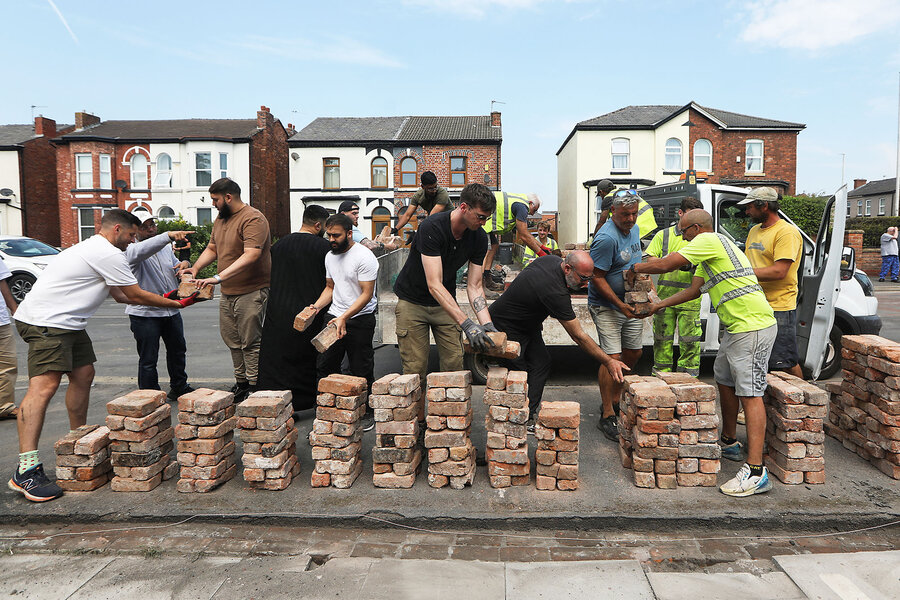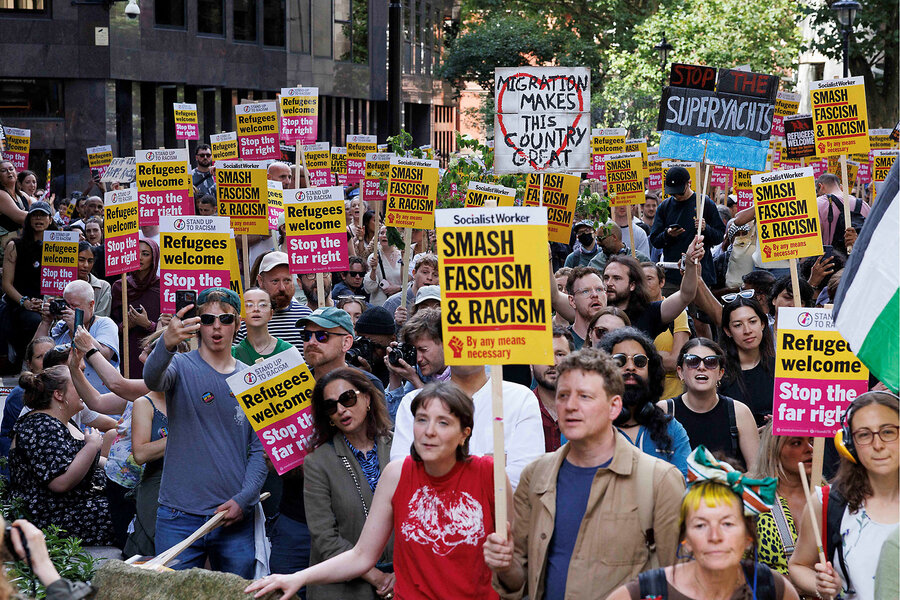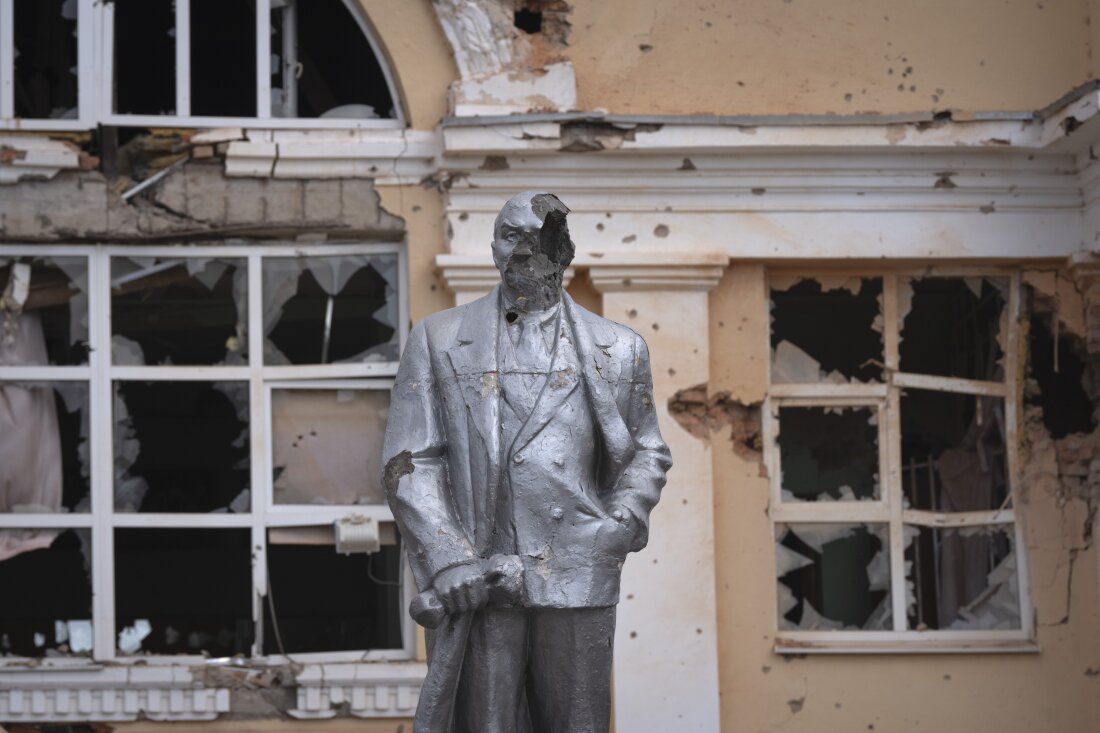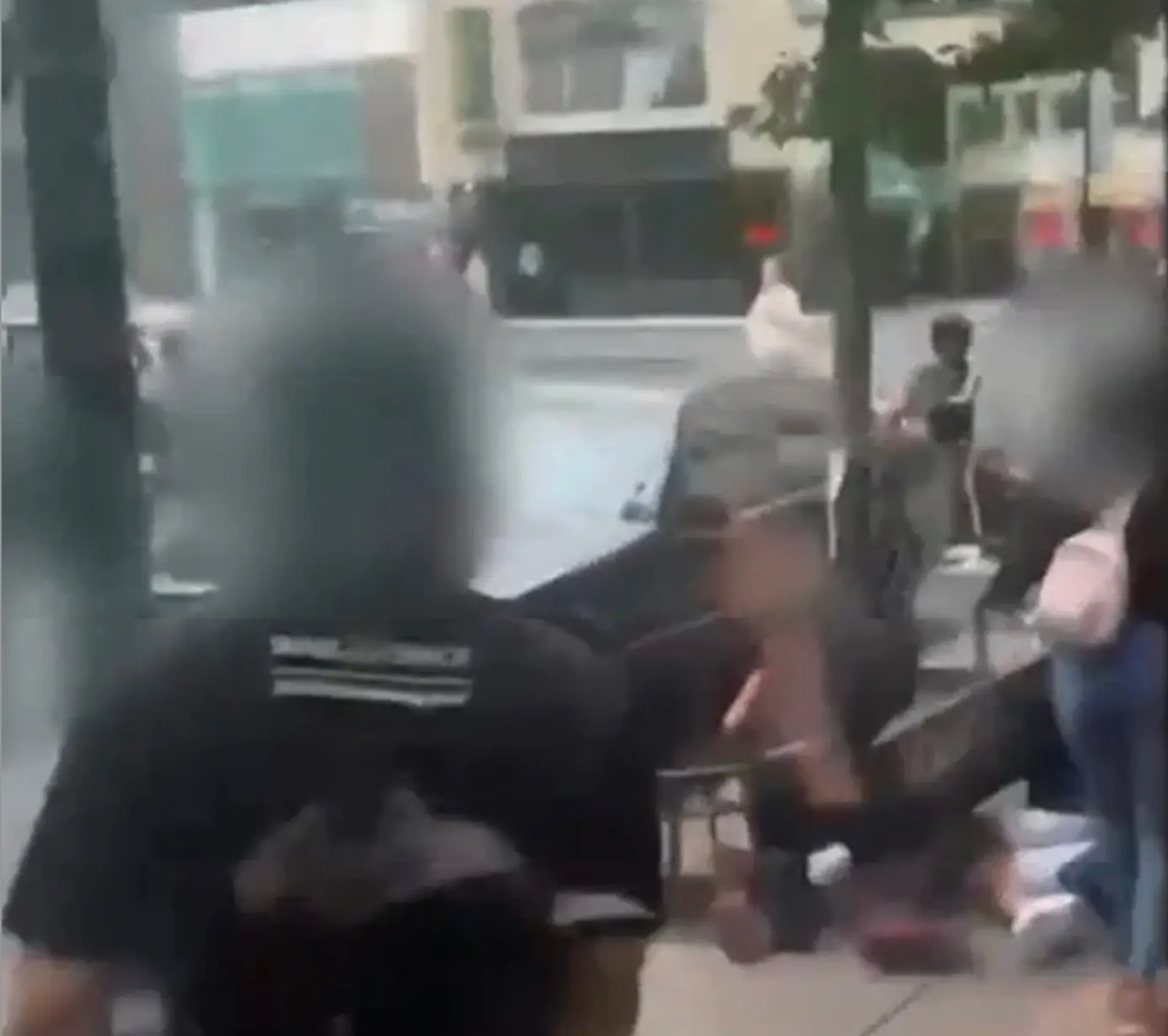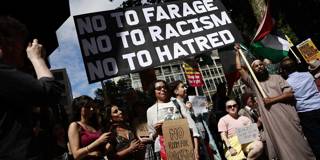
A local resident looks at damages on the site of a burnt barn following a wildfire in the Sancakli village, in Turkey's western province of Izmir on August 18, 2024. — AFP pic
SANCAKLI (Turkiye), Aug 19 — A picturesque village perched high on the slopes of hills offered a stunning sea panorama on Turkey’s western coast — until the engulfing flames turned the scene from paradise to a nightmare.
Fires have ripped through forests and steep valleys around Turkey’s third most-populous city Izmir in recent days.
Abdullah Ozata was desperate to see the scale of the damage when he returned to his nearby village of Sancakli, one of the areas where residents were evacuated to avoid the rushing flames.
“Twelve of my sheep and 50 chickens have perished in the blaze” that roared across the landscape, he told AFP, while showing the remains of burnt animals, turned into ash.
“I lost all my livestock,” the 43-year-old lamented as he walked among the debris. “I neither have another job nor another source of income.”
Two officials from the finance ministry photographed the damage and recorded Ozata’s loss for the compensation claim.
“The gendarmerie evacuated us against the human loss but I lost my animals,” he said.
“Our village was pretty, it was like a paradise, but it has turned into a hell”.
After four days of raging flames spread by strong winds, the fire has largely been brought under control, authorities said Sunday.
But the fire — the biggest Turkey has seen yet this summer — has left huge areas of charred and blackened land, destroying olive trees, gardens and beehives.
At least 43 buildings were damaged in Izmir, while 26 people were hospitalised with injuries related to the blaze.
Agriculture and Forestry Minister Ibrahim Yumakli said that efforts to douse hotspots were continuing but that the flames were now largely controlled in one place.
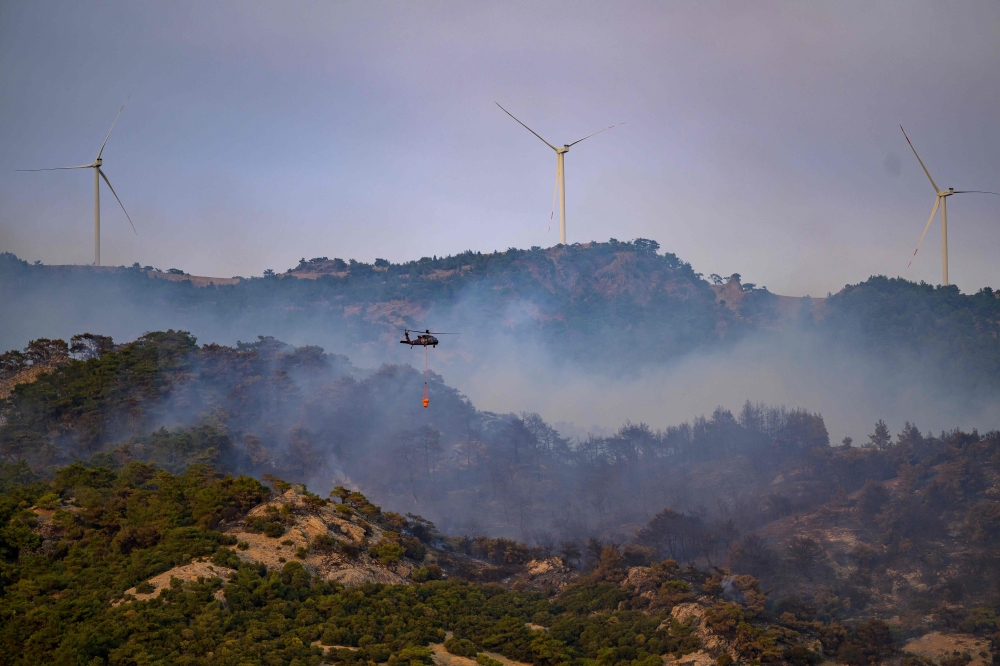
This photograph shows a helicopter carrying water to fight a forest fire, with windmills in the background in Turkey's western province of Izmir on August 17, 2024. — AFP pic
’Hide-and-seek’
Gokhan Cekmez was evacuated during the fire, but defied official orders to slip back into the village through a river in an effort to battle the flames.
“I played hide-and-seek with the gendarmerie, and without me and other villagers, the scale of the damage would have been much more serious,” the 35-year-old said.
“The outside help was not enough. We tried hard to put out the fire with pots and plates.”
In Sancakli the water was just beginning to run again on Sunday, after pipes were burned by the blaze, and authorities were still repairing the electricity cables damaged by the fire.
Local administrator Ilhan Kaya said agriculture and animal breeding were the only source of income for the 200-strong village.
“The villagers have to survive with the help of the state for at least six months, we will wait for the burned areas to turn green,” Kaya said.
Gulhan Arasa, wearing a flowered headscarf on the terrace of her three-storey house, was still haunted by the nightmare of the fire.
“I wish authorities would let me (help), even though I am a woman, I would take a hose and work to extinguish the fire,” she said.
“We were panicked when we were besieged by the flames that literally spread in seconds,” she said.
Arasa and her family, who rely on animal husbandry for their income, managed to keep around 100 sheep and goats in their shelter during the fire.
“Thank God, they’re all alive. We didn’t let them out because we were circled by the flames,” she said.
But other than that, she said, “everything has turned to ashes.”
“We expect the state to cover our losses. We want new saplings to be planted instead of our burnt saplings, we want trees to be planted instead of our burning trees.”
“God will help, the soil will renew itself, but when? I don’t know.” — AFP
